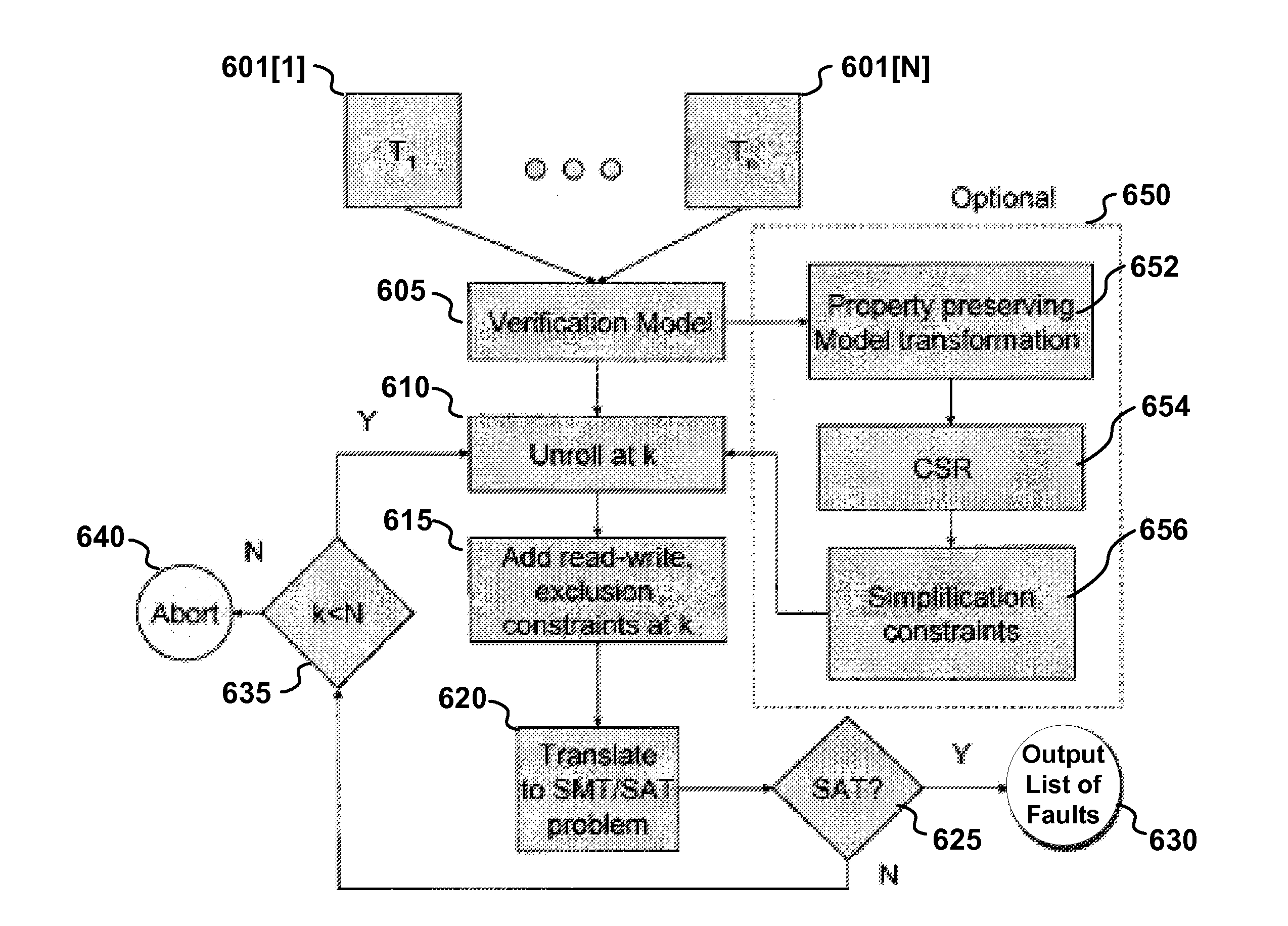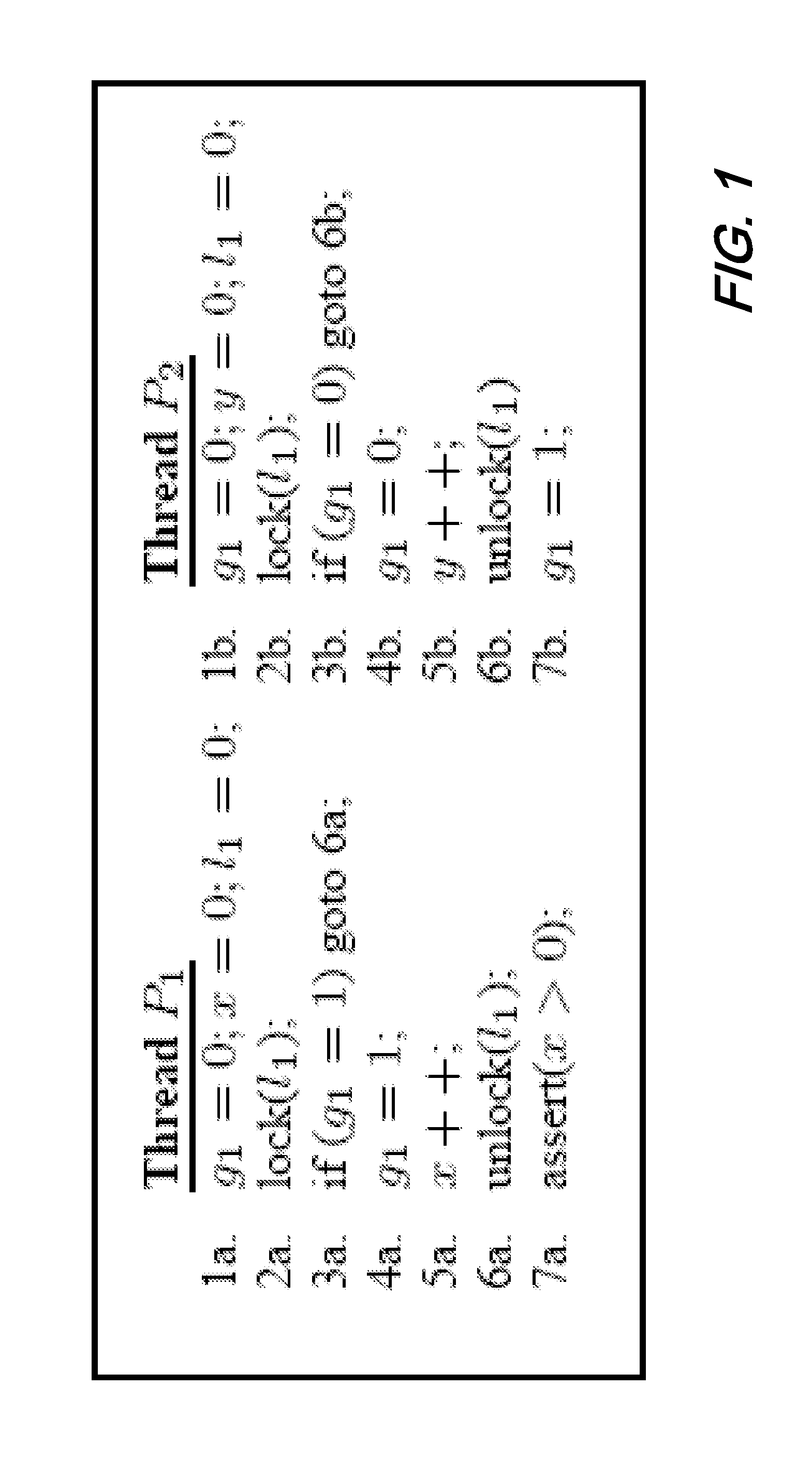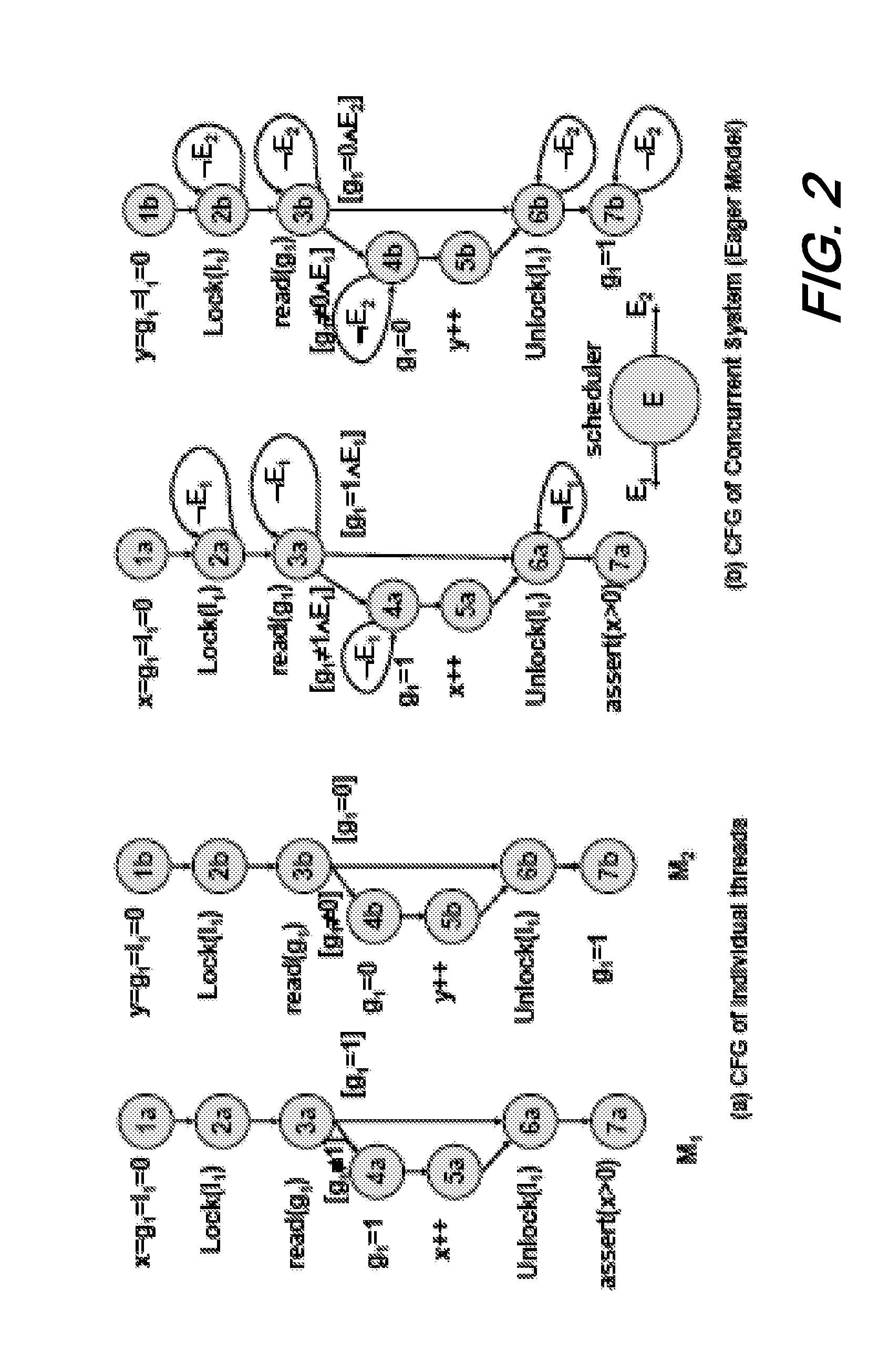Modeling and verification of concurrent systems using smt-based bmc
a technology of concurrent system and model, applied in program control, analogue processes for specific applications, instruments, etc., can solve the problems of wait-cycles that are detrimental to the performance of bmc, and achieve the effect of improving the verification performance in both runtime and memory, and reducing the size of bmc problem instances
- Summary
- Abstract
- Description
- Claims
- Application Information
AI Technical Summary
Benefits of technology
Problems solved by technology
Method used
Image
Examples
example
[0067]For the CFG of P1 shown in FIG. 2(a), the reconverging paths 3a→6a and 3a→4a→5a→6a can be balanced by inserting two NOPs between 3a→6a.
Motivation: Why Wait-Cycles are Bad?
[0068]Computing CSR on the concurrent model shown in FIG. 2(b), we obtain the reachable set R(d) as follows:
R(0)={1a,1b}
R(1)={2a,2b}
R(2)={2a,3a,2b,3b}
R(3)={2a,3a,4a,6a,2b,3b,4b,6b}
R(4)={2a,3a,4a,5a,6a,7a,2b,3b,4b,5b,6b,7b}
R(5)={R(4)}
[0069]Saturation at depth 5 is clearly inevitable due to the presence of self-loops. This results in a very restricted simplification during BMC. The saturation adversely affects the size of the unrolled BMC instances as the scope for reusing the expression for next state logic expression is reduced heavily.
[0070]In general, acceleration techniques for BMC [26] are more effective when the statically reachable set of non-NOP control states is small. Therefore, as a first step for scalable BMC, we are motivated to propose a modeling paradigm that eliminates self-loops. However, the...
PUM
 Login to View More
Login to View More Abstract
Description
Claims
Application Information
 Login to View More
Login to View More - R&D
- Intellectual Property
- Life Sciences
- Materials
- Tech Scout
- Unparalleled Data Quality
- Higher Quality Content
- 60% Fewer Hallucinations
Browse by: Latest US Patents, China's latest patents, Technical Efficacy Thesaurus, Application Domain, Technology Topic, Popular Technical Reports.
© 2025 PatSnap. All rights reserved.Legal|Privacy policy|Modern Slavery Act Transparency Statement|Sitemap|About US| Contact US: help@patsnap.com



